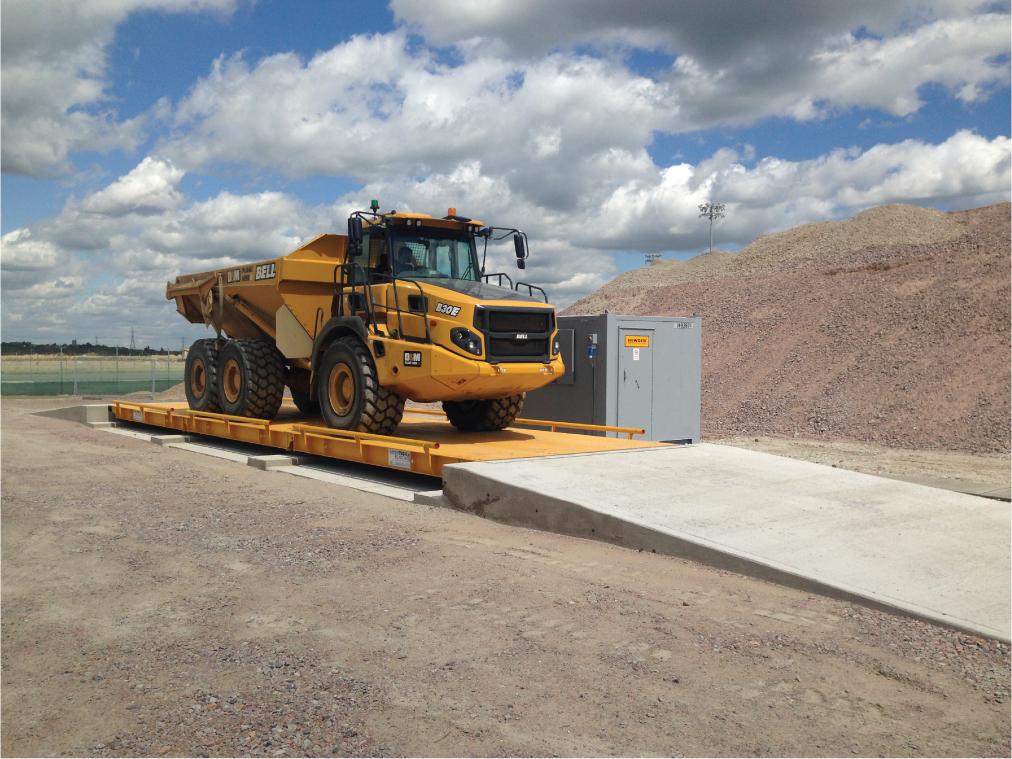Weighbridges
The Evolution of Weighbridges – a Potted History
Today weighbridges (truck scales in the US) are used in every conceivable industry sector, providing essential weight data for the movement, control, processing and sale of goods. In essence, weighbridges are very large platform scales, either mounted above ground (surface weighbridges) or below (pit weighbridges).

The history of the Weighbridge
Weighbridges have been used in the UK for centuries. Initially, their primary role was in weighing carts and carriages as part of the tax collection process on toll roads or turnpikes operated by turnpike trusts.
Turnpike trusts were bodies set up by individual acts of Parliament, with powers to collect road tolls for maintaining the principal roads in Britain from the 17th, but especially during the 18th and 19th centuries. At the peak, in the 1830s, over 1,000 trusts administered around 30,000 miles (48,000 km) of turnpike road in England and Wales, taking tolls at almost 8,000 toll-gates and side-bars. The industrial revolution saw a marked increase in weighbridge use. In parallel, as the network of canals and railways expanded in the 19th century, weighbridge use at station yards and canal basins expanded throughout the UK.
Early weighbridges were constructed mainly of wood and used systems of knife edges and levers connected to an external steelyard to allow operators to carry out the weighing function. Not unexpectedly, these early weighbridges were frequently ‘adjusted’ by unscrupulous operators to increase the tolls collected.
The sophistication of levers evolved over more than a century and their use continued until the latter half of the twentieth century. The use of steelyards to provide weight data was replaced by sophisticated dial systems connected to the lever system and weighbridge decks moved from wooden construction to steel.
The first electromechanical Weighbridges
Although the introduction of the first strain gauge load cells in the 1940s and 1950s brought a change in the design of weighbridges, limitations in instrumentation technology slowed their development and it was not until the late 1970s, with the advent of versatile electronics, that full electronic weighbridges started to become commonplace.
For several decades, existing lever-based weighbridges were converted to electronic operation by inserting small tension load cells into the final connecting rod in the lever system and replacing the dial by a simple electronic display. Although this electromechanical conversion method was initially very cost effective, the maintenance of the lever systems continued to be labour intensive and expensive, especially given the steady decline in the number of experienced scale engineers with knowledge of such systems. In addition accuracy levels were, by and large, limited to 1 part in 1000.
The growth of fully electronic weighbridges accelerated in the 1980s. These dispensed with levers and used compact load cells to fully support the weighbridge deck. Earlier weighbridge designs were almost exclusively limited to pit installations, which had to be deep enough to accommodate the large lever systems and allow access for maintenance. Now weighbridges could be installed in much shallower pits and, in addition, above ground, which significantly reduced civil work and installation costs.
Full electronic Weighbridges
Today 99.9% of weighbridges are based on full load cell and electronic design. There are three main types of load cells used:
- Compact canister
- Single ended beam and
- Double ended beam.
The load cells probably play the most important part in the electromechanical functionality of the weighbridge, converting mechanical loads into electronic signals. Long term reliability and performance of electronic weighbridges depends on two key factors:
- The design, material of construction and sealing of the load cells
- The design of the load cell mounting hardware
Extensive field trials and experience show that stainless steel canister load cells provide the best performance and reliability.
Although there have been important improvements in load cell design over the past two decades, their basic functionality has not changed significantly. Today the original analogue load cells are being replaced by more versatile digital load cells, but the difference is not apparent from the outside. Sealing levels have improved, with stainless steel IP69K units now providing exceptional environmental protection.
Weighbridge deck designs fall into three main categories:
- All steel welded construction
- Steel-concrete composites based on a steel frame and concrete poured on site
- Precast concrete
The choice will depend on a number of operational and fiscal factors.
Integrated Weighbridge systems
The greatest changes by far have come from the way fundamental weight data is collected, managed and used. Fully integrated weighbridge systems using the latest electronic and software technologies now provide much, much more than simple vehicle weighing operations. They are now used to automatically control vehicle access and departure from sites, with drivers interfacing with touch screen terminals at the weighbridges. Peripheral equipment includes traffic lights, traffic barriers, number-plate cameras and radiation detection systems. Dedicated weighbridge software can now integrate seamlessly with proprietary site-wide software management systems.
To find out more, contact Weightron Bilanciai, providers of an extensive range of weighbridge designs, intelligent instrumentation, software and peripheral equipment.